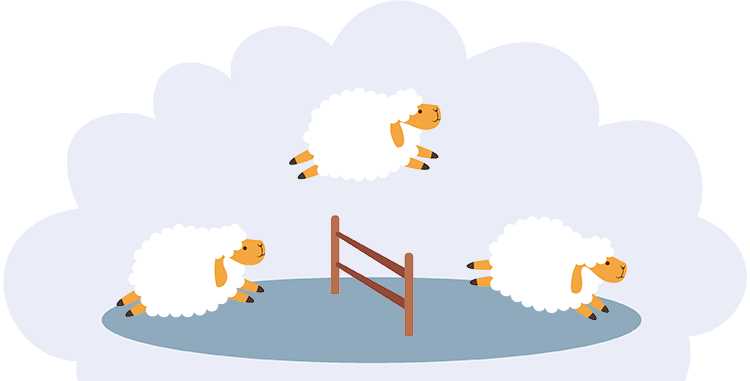Obstructive sleep apnea causes daytime sleepiness
A common cause of daytime sleepiness is obstructive sleep apnea. Severe snoring, respiratory arrest during sleep and severe, even painful drowsiness is observed in almost all patients with obstructive sleep apnea.
Excessive sleepiness during sleep apnea is a consequence of a violation of the structure of sleep. Studies have shown that the degree of drowsiness depends on the value of the apnea- hypopnea index during sleep, that is, on the severity of respiratory disorders. However, many patients with an apnea- hypopnea index of more than 5 do not complain of increased daytime sleepiness, because they are so used to their “sleepy” state that they no longer notice it.
Such patients deny drowsiness, so they need to evaluate the possibility of falling asleep in various life situations. According to this principle, the Epfort scale for assessing daytime sleepiness is built. This questionnaire has become widespread due to the simplicity and high reliability of the results obtained.
The patient scores his ability to doze off (or fall asleep) in various situations: reading while sitting, attending social events (theater, meeting), watching TV, traveling in a car as a passenger, talking with someone, relaxing after dinner, sitting quietly after eating, driving a car during a traffic jam. Answer options: 0 – never, 1 – slightly likely, 2 – moderately, 3 – highly likely.
The level of drowsiness can be used to judge the severity of obstructive sleep apnea syndrome. If sleepiness is rated more than 5 points, then the index of respiratory disorders is above the norm, and a result of more than 10 points corresponds to severe obstructive sleep apnea. Of course, these findings are approximate about the severity of the syndrome, because some patients may not adequately assess their drowsiness. Reliably the severity of obstructive sleep apnea syndrome can only be established during polysomnography .
Excessive drowsiness, reducing the patient’s quality of life, is not only a medical, but also a socio-economic problem: the risk of traffic accidents, industrial injuries increases, and labor productivity decreases.
Up to 20% of all traffic accidents are associated with falling asleep at the wheel. Patients with a sleepiness index >10 on the Epfort scale are of particular concern . In a survey of such patients, the frequency of road traffic accidents in them was almost 26%. Patients with untreated sleep apnea should be aware of the dangers of driving, especially when it comes to transporting people. Obstructive sleep apnea should be included in the list of diseases that limit the issuance of a driver’s license – in a number of countries this practice already exists.
In connection with all this, the issue of identifying and treating people with obstructive sleep apnea and excessive sleepiness is especially acute. Currently, sleep apnea can be effectively treated with CPAP therapy.
The duration of treatment depends on the severity of obstructive sleep apnea and comorbidities. In severe sleep apnea, therapy should be carried out for at least 1 year, and then the patient can independently determine the need and frequency of therapy according to his condition. Usually on days of overstrain (physical activity, stress, business trips), the patient knows that he needs to sleep with a mask. Before the abolition of CPAP therapy, a control polysomnography is performed and further recommendations are given. In severe cases, the use of a CPAP machine may be permanent. For treatment, a comfortable device Prisma 20A (Germany) can be used.
There is also a device for CPAP therapy Somnobalance E – a representative of the previous generation of devices from the same company ( Weinmann – Loewenstein , Germany). It can also be used to treat obstructive sleep apnea, although it is somewhat inferior to Prisma devices in a number of characteristics . The decision to choose a CPAP machine should be made in consultation with the doctor, based on the specific situation.
The latest development of Weinmann – Loewenstein (Germany) – a new line of CPAP devices Prisma Line . Their use allows the most effective and comfortable treatment of the entire spectrum of respiratory disorders in patients with obstructive sleep apnea syndrome.

